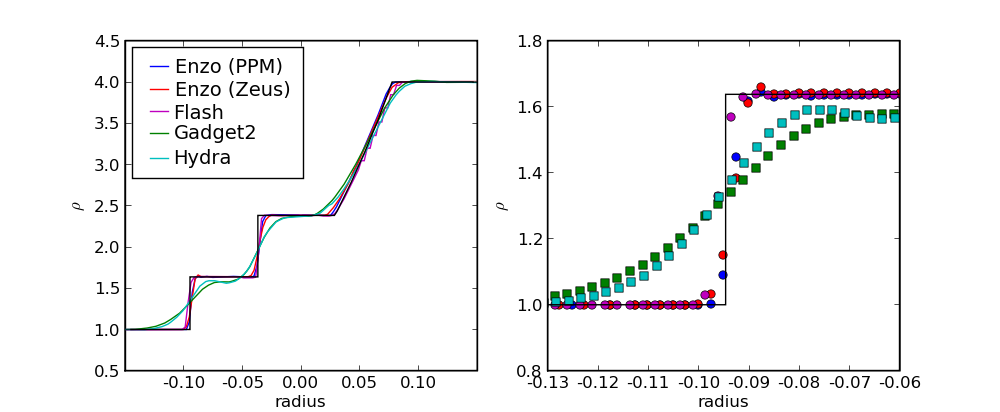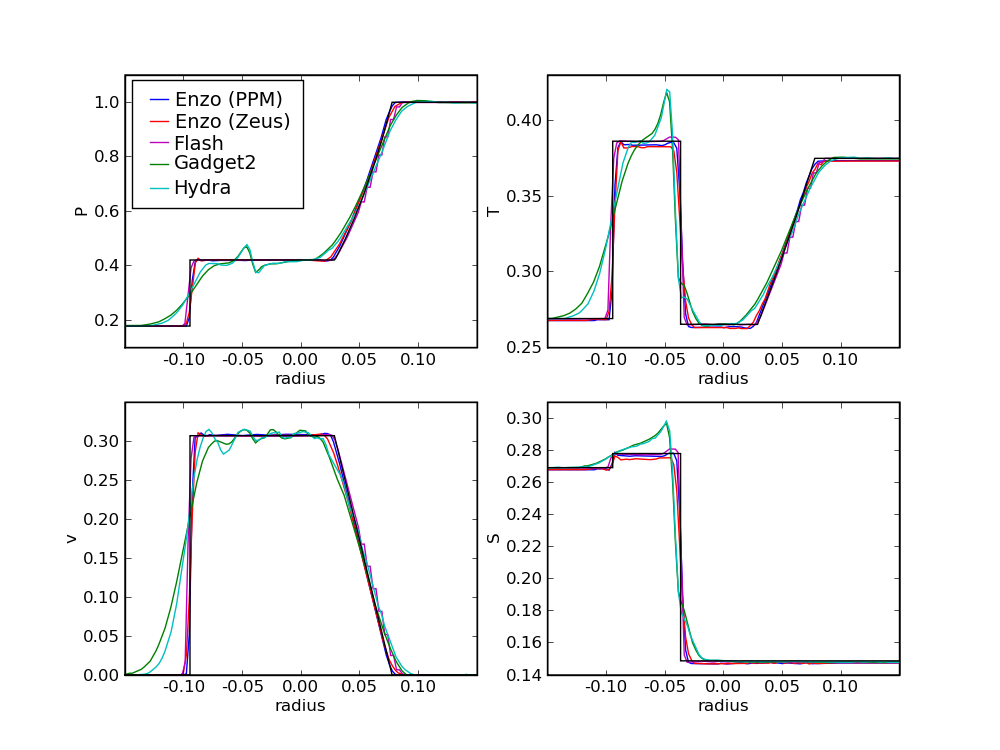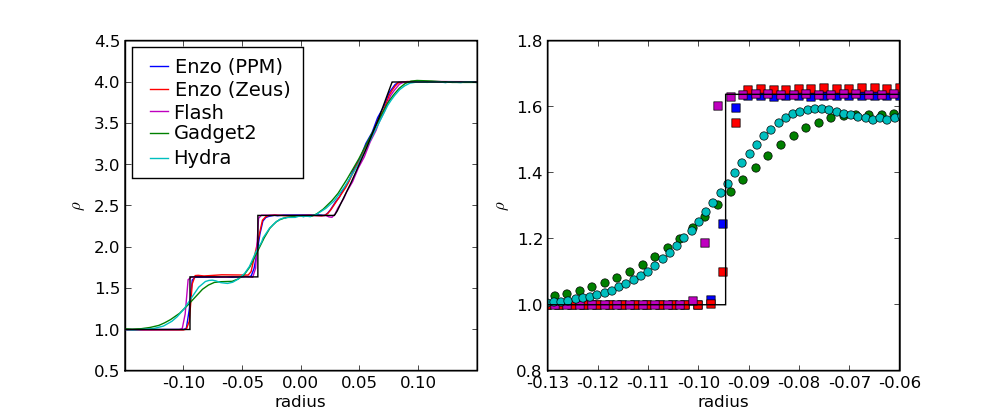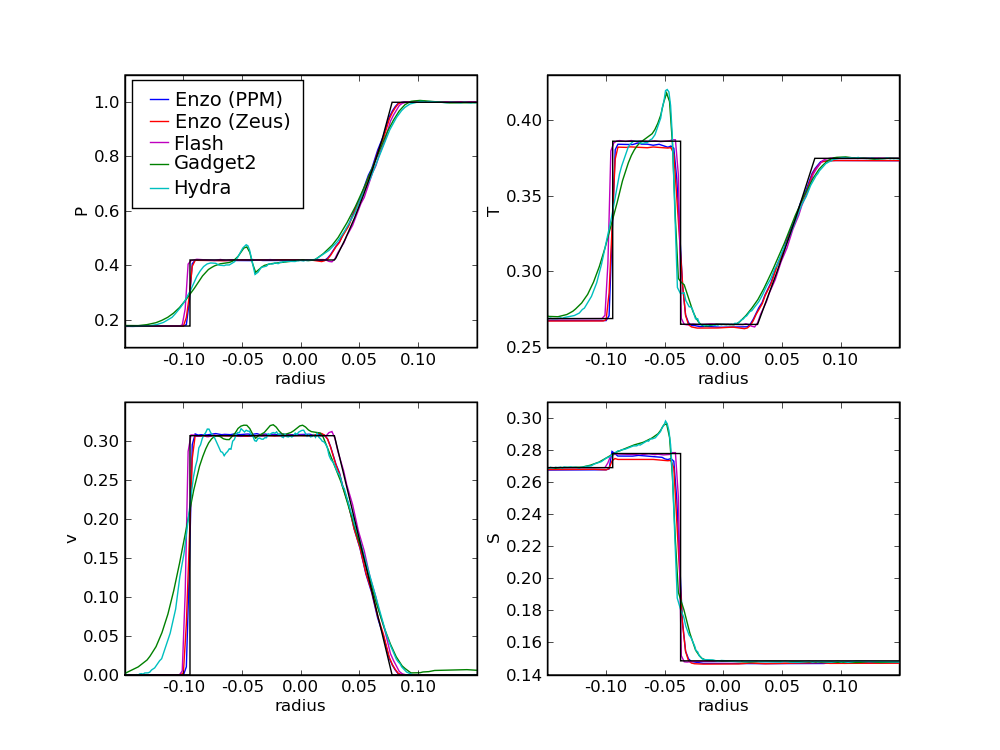This test is commonly performed in one-dimension, but here we extend this to consider two three-dimensional set-ups; the first of these has the fluid membrane at 90 degrees to the x-axis of the box ([1,0,0] plane), causing the shock to propogate parallel to this axis. The second set-up aligns the membrane at 45 agrees to each of the x, y and z axes ([1,1,1] plane).
In both cases, the intial density and pressure jump either side of the membrane are:

and we used a polytropic index of 5/3. In 2D, the projected initial conditions look like the image below, with black and white regions representing fluids of different densities. The left-hand image shows the shock face oriented along the [1,0,0] plane, while the right-hand image shows it oriented along the [1,1,0] plane. In actuality, this second one needs to be oriented in the [1,1,1] plane i.e. oblique to all the axes.




